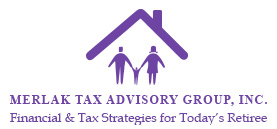A 2018 study found that about half of Millennials are under-saving for their retirement, and will have to work into their 60s and 70s as a result.
There are misconceptions among young professionals that deter them from contributing more towards their financial futures, at different stages of their careers.
When starting your career
“My retirement is 30-40 years from now, so I can wait a bit to start.” Just because retirement may seem forever away, doesn’t mean Millennials (and certainly not anyone older) can afford to wait to start investing. Even a five- to ten-year difference in waiting to invest for retirement can cost you tens of thousands of dollars in the long run.
This is why it’s so important to start saving for retirement as soon as you can. You’ll also want to take your retirement benefits into account when negotiating your job offer. Do not underestimate the value of a high employer match, just because you’re focused on the salary.
When changing careers
“If I switch employers, I’ll lose all the money I put in my retirement account.”
It is pretty common for young professionals to hop around from job to job in the early stages of their careers.
Unfortunately, there is also a misconception among Millennials that if they do save for retirement at your current job, through a 401k, 403b, or Thrift Savings Plan, that they won’t be able to take what you have saved with to your next job. That’s not always the case.
The answer to when you’ll own all of your retirement contributions depends on something that’s called your “vesting schedule.” The vesting schedule is the policy from your employer that determines when you’ll own all of the money contributed to and earned in your retirement account.
Some employers may work on a gradual schedule – for example, you may only be 20% vested every year, meaning you’ll own 20% of your funds after year one, or 100% after year five. Other employers, however, may have you fully vested on day one, or after year one, at which point if you were to leave your job, 100% of those funds would belong to you.
Lastly, if and when you do change employers at some point, you’ll likely have the option to leave your vest funds in that employer-sponsored account or roll them over to your new employer-sponsored account or individual retirement account (IRA).
There are pros and cons to either, but whatever you do, don’t cash out. If you withdraw your funds instead of rolling them over, you’ll incur a 10% penalty in addition to the taxes you’d already have to pay, for withdrawing before you’re age 59 ½. Transferring it over to another employer-sponsored account will keep your account penalty-free.
When going solo (for entrepreneurs)
I don’t have an employer, I am the employer, there are no options for me to save for retirement.
There is a rumor going around that retirement plans, or tax-advantaged investment accounts, are only for those employed full time at a company. But what if that employer is you?
As entrepreneurship and the gig economy become more popular, Millennials are in higher need of retirement vehicles that still offer the tax benefits they may have received through a “regular” employer.
Luckily, there are many different types of tax-advantaged retirement accounts available, if you’re starting your business or a solopreneur, including a Roth IRA, SEP IRA (which has much higher contribution limits than a Roth IRA) or SIMPLE IRA. While there may be plenty of financial considerations to make when starting a business or going off on your own, how you and/or your employees will save for retirement should be prioritized as one of them.
Source: https://www.forbes.com/sites/ellevate/2019/07/17/3-myths-busted-to-help-millennials-to-save-for-retirement/?fbclid=IwAR2hXqb_yXtkEHj6_uzt9Vqg0KRTSQVg8pD_ZQhm5O9dDrZv3gRijCDaWMA#6e5172df92a2
